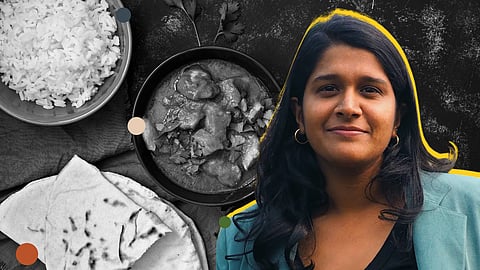

While writing an article of the Bengal Famine in 1934, Sharanya Deepak asked herself — why does Indian food only focus on taste-centric gastronomy? Who writes about cuisine, and who grows food and who defines the food culture?
She began to ponder over the question — why is it that the Indian food history does not acknowledge the periods of hunger; could there have been any reason that these periods got buried deep down in our history; and if so, then is it because of the shame and trauma associated with it?
Sharanya Deepak, one of the two residents of the Serendipity Arts Residency in Culinary Arts, has taken the responsibility to research and explore food histories through moments of famine in the South Asian sub-continent.
While focussing on the Rajputana famine of 1869 which affected the British territory of Rajputana (present-day Ajmer to Punjab), she said, "For the same, I will juxtapose this moment in history with techniques of ingenuity that present-day hunger is battled within the region, and see how moments of hunger trickle into urban kitchens. I also want to be able to work within the same without resurging the trauma and shame of the time. It will be seen if that can be done successfully."
Until now, writings on food were associated with the beau monde's, who decided what fit the heritage and what did not. As this narrative is slowly coming off the crutches of the elites and getting to the people, and she says, "Previously, food was associated with catchphrases like tradition, and authenticity, with a few folks deciding what is good and bad food. In a nation of a billion, all revived by social hierarchies, this is not only inaccurate but also banal. But nowadays we have publications like the very resolute Goya Journal, and London-based Vittles, a newsletter, which publish a lot of great writing on South Asian food."
Even as food writing is limited to 'restaurant reviews' in the mainstream media, she finds it tragic that we cannot look past this culture of hero-worship and lifestyle writing when it comes to food.
"Why I don't think it is odd is because food and media are both based on rigorous structures of ownership that are run by the dominant caste, urban, upper-class individuals and organisations. So the narratives also remain gate-kept and sterile. But I do hope that we will see more writing that branches out nowadays.
"I think the international media, even though it has its own set of challenges, has set alight a bunch of great food writing from India. Take this piece on who guards the Alphonso mango on Blood Fry, or this excellent piece about the Kebab roll in Pakistan in Vittles. These are all great bits of writing that are about food, but also about much else. This is the kind of writing I enjoy, I cannot think of food in isolation," she says.
For someone who started as a freelance journalist with mainly international publications, and did not intend to make food-writing her genre, her reason for branching out was because the Indian media is saturated with feature writers.
"I thought it best to have a niche if I was going to freelance, as the food writing world was sort of up and coming then. It was a good ruse to be able to enter and write about the things I enjoy, but can also be critical of. I am not exclusively a food writer though. Although I have been assumed to be. So the next year is going to be a direct effort to branch out and write about other things as well," she says.
Currently, Sharanya is working on first-person essays and wants to keep on writing more. Through her process of writing the essays, she expects to have enough research in place to eventually put together a book proposal. She believes that urban dishes that come up in cities, especially the ones the cannot be categorised like the Tandoori momo or Frankie roll, have interesting stories around them. Even though heritage food critics are dismissive of these dishes, they have become a part of the upcoming culture and have interesting insights into the new age communities. "I think these hold great histories and good scenes, and maybe I will look at working on a book about them," she concludes.
(Inputs from IANS)
